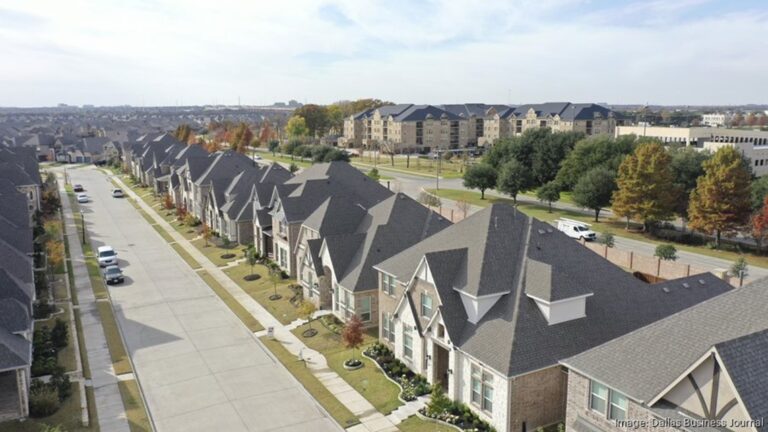The bureau's annual population estimates can be used to determine how many people move into a metropolitan area or county each day, and vice versa.
Dallas — Read this article and other North Texas business news from our Dallas Business Journal partners
Information is a type of capital and is extremely important in business. And one of the richest sources of such capital has just been replenished.
The U.S. Census Bureau released new metropolitan area and county-level population estimates last week. The Dallas Business Journal has already reported on some high-level trends and provided a breakdown of growth rates for all 254 Texas counties.
But about one of the most popular pieces of information in the annual demographic dump: the information that comes from the mouths of countless real estate agents, site selectors, economic development leaders, politicians, school administrators, and others. requires additional reporting and investigation.
The bureau's annual population estimates can be used to determine how many people move into a metropolitan area or county each day, and vice versa.
Note: Data is from mid-2023. However, the bureau releases new data every spring, so this will be the best and most up-to-date data for next year. Use it in your presentations and sales pitches to wow your colleagues and friends.
Here are some takeaways from the data.
• The 13-county Dallas-Fort Worth metro added 101,419 people through net migration from July 1, 2022 to July 1, 2023. This looks like this: The transition will add approximately 278 people per day to DFW.. Net migrations are inbound migrations minus outbound migrations.
• Of net migration, more than 40% came from international migration, with an estimated 40,962 people – or Approximately 112 immigrants arrive from all over the world every day.. This level of international net immigration was the sixth highest in the country. The top five were the New York City metro, Miami, Los Angeles, Houston, and Washington DC.
• Due to natural population growth (births minus deaths), DFW added 51,377 people.The number of births was 102,227, more than double his number of deaths, and equal to his number of deaths. Approximately 280 births occur per day in the metroplex..
• As DBJ's Pramedi Ifasso previously reported, DFW overall added an estimated 152,598 people, or about 418 people per day, after accounting for migration, births and deaths.
Additionally, the new Census Bureau data provides some interesting insights at the county level.
• In Collin County, north of Dallas, only 21% of the estimated population growth was due to natural variation. The net number of migrants was 28,886; Approximately 79 people per dayaccounted for the majority. Collin ranks second in the nation in terms of direct population growth, behind Harris County in Houston. Although Harris County had a large number of overseas immigrants, internal immigration was actually negative, with the natural increase and decrease of 34,695 people accounting for approximately 65% of the total population increase and decrease. This highlights how Colin and his DFW have become a magnet for people across the United States.
• On the east side of the metroplex, the ratio was even more skewed. In Kaufman and Rockwall counties, which ranked first and second in the country for growth rates, net migration accounted for 92% and 93% of estimated population growth, respectively. To put it another way, For every birth in these counties over a 12-month period, each county added about five people through migration.. This suggests that these neighborhoods are undergoing fundamental changes and may need more types of businesses to meet the needs of their residents.
• Tarrant County, home to Fort Worth and Arlington, saw very balanced population growth. Natural fluctuations led to an increase of 13,010 people, and slightly international migration led to an increase of 14,159 people.Total population change means 27,301 people About 75 more people showed up in the county per day.

